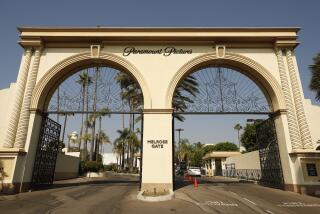Pan Am Crisis: Desperate but Not Hopeless
- Share via
What’s the story on Pan Am? There have been at least four formal or informal merger approaches to Pan Am Corp., the holding company for Pan American World Airways, since the first of the year.
But nothing has come of them--despite the fact that they were supported by management and labor at the $3-billion (revenue) airline company. First, Pan Am’s management hired Citicorp to find the company a merger partner. Then the airline’s unions hired Drexel Burnham Lambert, and its star investment banker Michael Milken, to find an investor who would help employees buy a big stake in the airline.
To no avail. American Airlines looked, but didn’t buy. New York real estate man Donald Trump reportedly bought some stock, but nothing happened. British raider Sir James Goldsmith talked to Pan Am Chairman C. Edward Acker. And lately Los Angeles investor Kirk Kerkorian also has visited with Pan Am’s chairman.
In a Shambles
No results mean little action. Pan Am stock, which hasn’t sold above $10 a share since 1978, crept over $6 a share earlier this year, but has now dropped back to around $5.25, where it closed Tuesday.
What’s wrong? Many things, obviously. Pan Am is a shambles, a once-great company brought to the brink of ruin by decades of inept management and shortsighted unions.
Right now, in a sense, the company is broke. Years of losses--more than $1.5 billion since 1980--have wiped out shareholder equity. Pan Am is now operating on cash flow from a good year for European travel and a $125-million loan. It has almost $1 billion of debt and owes $465 million to its pension fund.
A Pan Am acquirer or investor would have to deal with those realities and with Pan Am’s unions. The problem there is not only to reduce the airline’s $1 billion in wage and salary costs, but to negotiate a change in work rules that survive from past eras when airlines were regulated and uncompetitive and could pass costs along to the paying passengers. Pan Am’s work rules, for example, stipulate that its pilots do not stay at airport hotels on layovers but must be put up at first-class downtown hotels--a rule that costs the airline $5 million a year.
If it’s that bad, why should anybody want to buy it? Because Pan Am has valuable landing rights in foreign countries, stemming from the days--as described by Marilyn Bender and Selig Altschul in their book, “The Chosen Instrument”--when it pioneered the U.S. role in international air travel.
After World War II, Pan Am wanted to be designated the only U.S. international carrier, but TWA (and its owner, Howard Hughes) blocked it, and now deregulation has spurred other U.S. carriers--American, Delta, United--to fly the oceans. The U.S. share of the global market hasn’t declined, but Pan Am’s has as managements since the 1970s have fumbled attempts to adapt.
Privileged Positions
Still, Pan Am has a privileged position at London’s Heathrow Airport and, due to postwar agreements, it has the Intra German Service, which allows it not only to use Frankfurt as a hub but to fly to Berlin when even Lufthansa, the West German government airline, cannot. Such privileges don’t appear on a balance sheet, observes Robert Joedicke, an airline analyst for Shearson Lehman, but they have real value.
Pan Am proved that two years ago when it sold its Pacific routes, which accounted for less than 25% of Pan Am revenue, to United Airlines for more than $700 million. Today, the whole of Pan Am theoretically could be bought for around $1 billion. So what will happen? Well, potential acquirers like American Airlines may be waiting for Pan Am to fall into bankruptcy, so they can pick up the pieces. But that’s risky because foreign governments might not grant Pan Am’s historic privileges to the successor of a bankrupt.
What is most likely is that employees will acquire a major stake in Pan Am in a deal worked out by the inventive Milken, the impresario of the “junk bond” market, who sees employee buyouts as a trend. “Employees recognize that without ownership, they get no benefits,” he says. “They don’t benefit proportionately when the company does well, and they suffer when it does poorly.”
What Milken doesn’t say publicly is that employees are not blameless in Pan Am’s decline and will pay for their ownership stake with wage and work rule concessions. The unions were already offering to cut Pan Am’s wage bill by almost 20%, or $180 million. But what the airline needs to be competitive is a 35% cut in wages.
If the unions accept that, the employees might well end up owning a controlling share of Pan Am and taking responsibility for its success--which is a healthier thing than always blaming management for its failure.
More to Read
Inside the business of entertainment
The Wide Shot brings you news, analysis and insights on everything from streaming wars to production — and what it all means for the future.
You may occasionally receive promotional content from the Los Angeles Times.










